
In May 2021, Barbara Pompili, the French Minister of the Ecological Transition, announced the selection of 215 startups and SMEs for the GreenTech Innovation label, among which 45 are solutions for more sustainable buildings and better energy efficiency. These startups will be supported by the government for their development and commercialization. This is one example out of many government initiatives to boost the building energy efficiency and renovation market.
The International Energy Agency estimates that the building sector is responsible for 42% of global electricity consumption. Energy efficiency is about performing the same tasks with less energy. Buildings can go down to net-zero energy consumption which means that the total amount of energy used equals the amount of renewable energy created on-site or by off-site renewable sources. As most of the energy used in buildings is for maintaining a comfortable temperature (heating or cooling) and good ventilation, effective thermal insulation has a major impact on energy consumption. Thus, in the context of global efforts to reduce energy consumption and reach the 2050 net-zero target, buildings’ energy efficiency is more than necessary. To achieve it, most of the efforts need to focus on renovating and retrofitting existing buildings, rather than new performant ones, as they will represent more than 90% of 2050’s properties. It has ecological and economic benefits as it reduces the amount of energy consumed (and associated GHG emissions) while lowering the energy bill for the occupants. The top priority are the « thermal strainers » which are the buildings with the worst energy efficiency, where cold enters in the winter and heat enters in the summer. In France, they correspond to the buildings with an energy consumption above 330 kWh /sqm /year, which are ranked F or G. There are three main thermal losses. The surfaces (roof, walls, windows, ground floor) between the interior and exterior account for up to 80% of energy loss. Then, the controlled mechanical ventilation and ventilation grilles, which ensure the renewal of indoor air, make up to 20% to 25% of energy loss. Finally, the thermal bridges, which are points in construction where the insulation barrier is interrupted, contribute to 5% to 10% of heat loss. Thus, efforts should be put on external cladding and filling the thermal bridges to retrofit the existing buildings.
Different types of innovative solutions exist to improve buildings’ energy efficiency:
- Measure: Many sensors and IoT technologies have been developed to compute more accurately buildings’ energy consumption. French start-up Smart Impulse, for instance, has developed a smart meter to measure the electricity consumption of buildings by usage (lighting, IT, heating, etc.) which gives insights on potential energy savings.
- Retrofit: Picking the right materials highly contributes to buildings’ efficiency. New technologies have been developed to avoid energy loss, such as the thermal reflective resin for roofs of the start-up Cool Roof. Their solution aims to return roughly 90% of the solar heat. It protects the roof from physical damage while maintaining a comfortable temperature inside the building. Moreover, the Dutch EnergieSprong approach is being deployed in France, UK, and Germany for a quick and affordable retrofit of the existing buildings into zero-energy ones.
- Optimize: There are more and more integrated energy management systems that measure and autonomously regulate energy consumption. Thanks to numerous sensors and IoT devices, the American start-up Budderfly provides a solution optimizing entire buildings’ energy consumption.
Although these solutions are very promising, some challenges still have to be overcome. First, renovation takes time obtaining the required permits for structural renovations, finding the right partners, and performing it. Then, even if some startups and companies are offering affordable solutions, it remains costly and often requires important initial investments. All the more so as energy-efficiency goals are often secondary to economic considerations and are not taken into account in the property’s life-cycle costs. Another barrier is the fragmentation of the construction industry, which involves many different actors and stakeholders who have varied interests. Finally, the diversity of the social and regulatory contexts – within the EU for instance – makes it hard to scale solutions.
However, most countries are addressing this issue and implementing associated regulations, incentives, and climate change targets. In France, the government has put in place financial support for buildings renovation but also biding policies like the interdiction from 2028 to rent a flat or house with an energy performance rated F or G. In 2021, the French government announced 6.6 million euros for buildings’ energy renovation over 2 years in their economic recovery plan. Another example of an efficient policy in California where homes and buildings are relatively energy-efficient today. Since 1975, the California Public Utility Commission has directed the investor-owned utilities to commit over $US 5 billion to energy efficiency programs, 85% of which has been targeted at retrofit energy efficiency investments in existing buildings. For instance, Netflix has equipped its headquarters in Los Gatos with View dynamic glass, which controls how much light gets in and contributes to saving up to 20% of energy costs.
To conclude, there are a lot of startups that have spotted an opportunity in improving buildings’ energy efficiency, whether it is with hardware and high-tech materials or smart software. The market is far from being addressed, and governments are multiplying incentives to do so, which is very promising as soon as people are willing to make the investment.
2 Key Figures
637 building energy efficiency & management startups
registered by Tracxn
Global efficient building market expected to reach $253 Bn by 2027
The global efficient building market was estimated at $146 Bn in 2020 and is expected to reach $253 Bn by 2027, at a CAGR of 8.15%.
3 startups to draw inspiration from
This week, we identified three startups that we can draw inspiration from: Sensor Flow, View, and 75 Fahrenheit.

SensorFlox
SensorFlow is a Singapore-based start-up that develops room automation and energy management systems focussed on the hospitality sector. Its solution helps automate a building to optimize energy consumption. It includes occupancy sensors, smart thermostats, door sensors, and split unit thermostats.

View
View is a Californian start-up that has created a glass solution that increases and optimizes the amount of natural light in buildings while simultaneously improving energy efficiency, and advancing smart and connected buildings.
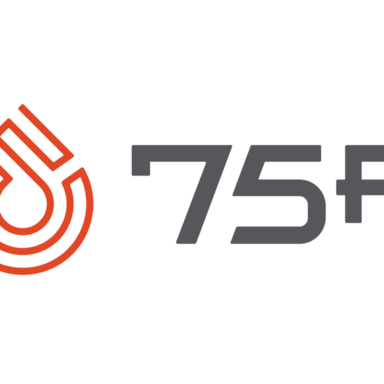
75 Fahrenheit
75F is a US-based start-up making smart building automation affordable and easy to deploy. 75F leverages IoT, Cloud Computing and Machine Learning for data-driven building intelligence and controls for HVAC, lighting and energy optimization.
123Fab #48
1 topic, 2 key figures, 3 startups to draw inspiration from
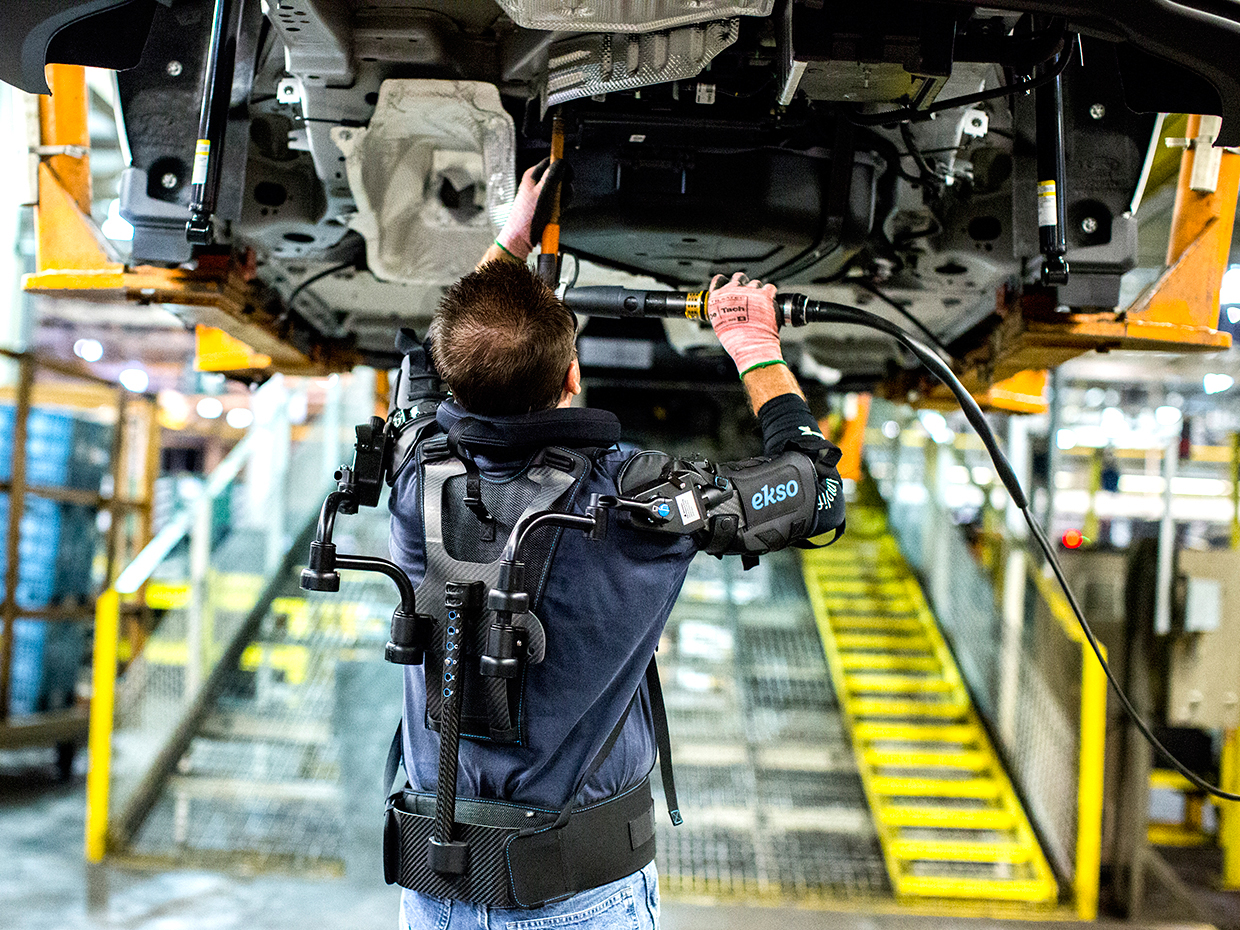
While many of the early exoskeletons were focused on military and medical applications, in recent years there has been an increase of new use cases due to decreasing costs. Exoskeletons are being used in a range of industries from manufacturing and construction to agriculture. BMW, Honda and Hyundai use them in the automotive industry; Samsung, Panasonic, Mitsubishi and Siemens in electronics; and Geodis, Pon and AT in logistics and shipping.
According to ASTM International, exoskeletons can be defined as wearable devices that work in tandem with the user. They are different from autonomous robots in that they don’t work in place of the blue-collar worker. They are placed on their body and act as amplifiers that augment, reinforce or restore human performance, as opposed to mechanical prosthetics, such as a robotic arm or leg, that replace original body parts.
The global exoskeleton market can be segmented on the basis of two main criteria. On the basis of extremity, the market can be divided into lower extremity, upper extremity and full-body. In terms of product, the market can be classified into two categories:
- Powered exoskeletons — they use batteries or electric cable connections to run sensors and actuators
- Passive exoskeletons — they do not have any electrical power source and can be used for weight distribution, energy capture, locking, etc.
In recent years, exoskeletons have emerged in industries that are less amenable to automation. For example, industries such as construction or oil and gas, which operate in unstructured environments, or manufacturing industries that produce a wide variety of parts of different shapes and sizes. In these industries, blue-collar workers handle the most complicated tasks, resulting in wear-and-tear experiences. While some repetitive tasks have been handed over to autonomous robots, exoskeletons fill the automation gap for non-repetitive and hazardous tasks by allowing workers to perform strenuous tasks safely and efficiently. The EksoZeoG developed by Ekso Bionics, for example, helps construction workers use heavy hand tools by bearing the weight of the heavy equipment.
Advances in enabling technologies (actuators, batteries, advanced materials, etc.) have reduced the costs and increased the functionality of exoskeletons in recent years, but they still represent a significant investment. While the price varies between passive and active exoskeletons, full-body, lower and upper, the average exoskeleton costs several thousand dollars. Given the significant cost, a handful of startups have sought to lower the barrier to adoption via more innovative business models. The concept of Robotics-as-a-Service (RaaS) is gaining ground. Sarcos, which is one of its proponents, allow customers to shift their CAPEX to OPEX, and thus deploy solutions without upfront costs. Based on its research, Sarcos’ customers perceive other benefits to RaaS, such as the elimination of technology risk and the absence of maintenance costs. Other startups are looking to democratize the use of exoskeletons, especially passive ones that are less expensive. With the help of crowdfunding, French startup HMT wants to use a low-cost model to sell its products at €200.
While the market is still looking for an accurate combination of hardware, the competition to make the best, powered exoskeleton is slowly shifting from a race for the best hardware to a race for the best software. In this sense, the industry can be compared to the semiconductor industry in the late 2000s with wafer handlers. The robots all managed to move a wafer from A to B, regardless of the hardware, but it turned out that it was the software that made the difference. The winners were the ones with the best software and the most reliable architecture with less downtime. Today, exoskeleton research is moving in this direction and increasingly focusing on complex software. It seeks to develop more intelligent exoskeletons, via features such as balance control or energy transfer optimization. The BioMot project, based at the Human Locomotion Laboratory in Madrid, is a weak signal of this shift. They are trying to develop more wearable equipment, that is lightweight and compact, and which is especially better able to anticipate and detect the intended movements of the worker. Through dynamic sensorimotor interactions, the exoskeletons have real-time adaptability and flexibility, increasing the symbiosis between the wearable and the user. Such projects pave the way to a new generation of lighter and smarter exoskeletons.
In short, the future of industrial exoskeletons looks bright. Barriers to adoption are expected to further decrease as costs drop and lightweight exoskeletons are increasingly developed. Regulation should also emerge, as evidenced by ASTM International’s creation of an exoskeleton and exosuit committee in 2017 to define international standards. Just as it is illegal to walk in construction areas without the proper PPE, it may one day be illegal for blue-collar workers on construction sites, in warehouses and manufacturing plants to use tools without the adequate exoskeleton. What’s more, advances in materials, battery and actuator technologies suggest that new applications are in the offing, which should boost adoption even further.
2 Key Figures
129 exoskeleton startups
registered by Tracxn
Global exoskeleton market expected to reach $5.7Bn by 2027
The global exoskeleton market was estimated at $310M in 2019 and is expected to reach $5.7B by 2027, at a CAGR of 43.4%
3 startups to draw inspiration from
This week, we identified three startups that we can draw inspiration from: Laevo, Noonee and StrongArm Technologies.
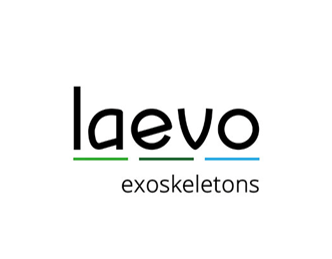
Laevo
Laevo is a Netherlands based startup that is developing a light and comfortable exoskeleton for work and industry. It redistributes forces away from the user’s back muscles while bending forward.

Noonnee
German startup Noonee manufactures a lower-body exoskeleton that is designed to function as a chair. Their product is called Chairless Chair and is specifically made for workers in the automotive industry. Its main purpose is to prevent worker disruptions due to injuries or muscle fatigue and also to help an aging workforce.
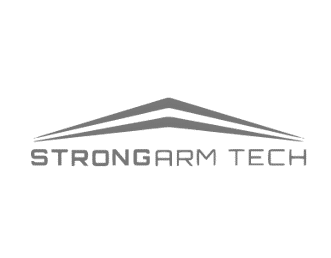
StrongArm Technologies
StrongArm Technologies is a developer of a safety platform designed to actively manage industrial safety, productivity and performance. The company’s platform uses wearable sensors and AI-based analytics to collect, analyze and predict insights on industrial workers to mitigate the injury risk, increase worker productivity and comfort.
123Fab #47
1 topic, 2 key figures, 3 startups to draw inspiration from
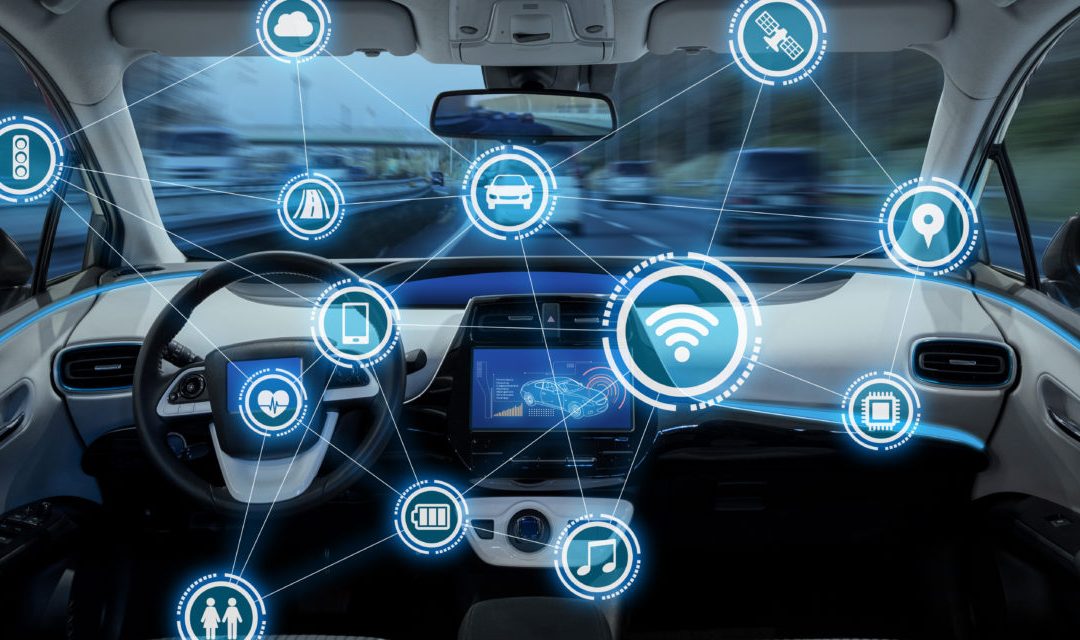
Connectivity is booming in the automotive industry. Today, the average high-end car uses seven times more code than a Boeing 747. With parking assistance, GPS, music applications, and more, OEMs (Original Equipment Manufacturers) and Tier-1 suppliers have rushed into the quest for connectivity. They have begun to integrate high-end electronics into privileged parts of the car, near the engine or infotainment systems, away from extreme outdoor conditions. As the value of data-driven services increases, even suppliers of initially “dumb” components – especially those that work at the junction between the outside world and the car (tires, windshields, bumpers…) – are exploring ways to connect their products. A series of solutions are being tested to resist commoditization, increase their service offering and better understand driving behavior.
Smart tires
Tires are one of the most battered parts of the car. They have to withstand high pressure, impact, a wide range of temperatures, road friction, etc. As a result, they are one of the most difficult automotive parts to equip with energy self-sufficient electronic systems. Although these stringent specifications have led to a delay in the adoption of connected tires, solutions are emerging to collect and use data. For instance, Revvo offers a remote tire management solution for fleet owners. Using sensors, they provide tire condition information in real-time. This information is analyzed via cloud computing to gain insight into behaviors that affect the life of the tire and estimate when it will need to be changed to avoid unexpected failure. Other startups, such as Tracsense, use car-mounted optical sensors to analyze the tire’s surface and feed the information into cloud-enabled machine learning models to assess road friction and infer on the next mile friction. This provides hyper-local information enabling precise road prediction forecasts.
Major corporates players have developed their own connected tires to keep up with the data race. In 2018, Michelin announced Track connect, a set of sensors designed for circuit racers that monitors tire pressure and temperature. A year later, Bridgestone announced its sensor technology for autonomous vehicles that estimates wheel axle load and tire wear condition. Also, in 2019, Pirelli developed a tire that interacts with the 5G network for V2X, feeding real-time road condition information and potential hazards such as aquaplaning.
Smart windows and windshields
Car windshields, roofs and windows are also likely to become connected. Gauzy already provides smart glass to car manufacturers, enabling dynamic light shading, temperature control, and transparent information display on them. Other companies offer Heads-Up Displays (HDU) on windshields: WayRay and Futurus provide immersive holographic augmented reality displays, projecting all sorts of information on the windshield, such as directions, potential danger zones, highlighting pedestrians and moving objects to avoid collisions. Last year Gauzy got funds from Hyundai to extend product reach and Futurus announced a partnership with BMW, while in 2018 Porsche and Hyundai invested in Round C financing of WayRay.
In the automotive glass industry, corporates are also trying to offer connected capabilities in their products to create differentiated offers. Major players like ACG glass propose the integration of antennas within the windshield to improve connectivity, as well as energy-efficient glass to reduce the need for AC. AGC glass has also developed a type of glass that does not interfere with LIDAR waves used by autonomous cars to detect their surroundings, allowing the LIDAR sensor to be inside the car, protected from the exterior.
In short, these technologies have attracted the interest of automotive OEMs and many of them will most likely develop high-end cars in the coming years. The main questions that remain are their adaptability to large-scale production, their energy consumption and the computational cost it requires. In any case, in tomorrow’s vehicle, whether it’s AI-assisted driving or fully autonomous, connectivity will be central and competition will be fierce.
2 Key Figures
514 connected car startups
registered by Tracxn
Connected cars market expected to reach $48.8 Bn by 2027
The connected cars market was estimated at $14.3 Bn in 2019 and is expected to reach $48.8Bn by 2027, at a CAGR of 26.3%
3 startups to draw inspiration from
This week, we identified three startups that we can draw inspiration from: Revvo, Tracsense and WayRay.
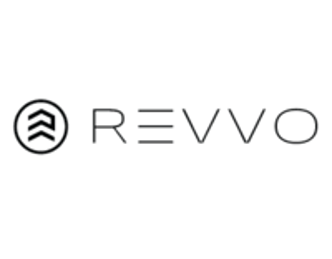
Revvo
Founded in 2018 in the US, Revvo developed smart sensors vehicle tires designed to monitor tires while a vehicle is on the road. The company’s tires include proprietary sensors and powered by artificial intelligence that is embedded inside the tire, which generate a real-time feed of a tire’s condition and performance which is sent to the cloud via an application on the driver’s phone, enabling drivers to predict tire health, thereby improving vehicle safety and performance.
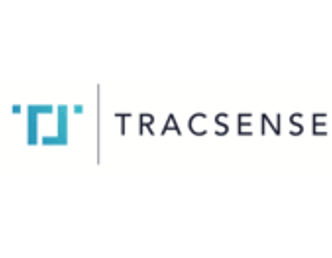
Tracsense
Tracsense developed an automotive technology intended to make slippery roads visible to self-driving cars. The company’s technology is supported by machine learning, cloud technology and an optical sensor solution that can determine the road friction with record accuracy, enabling customers to make autonomous driving possible in all weather conditions.
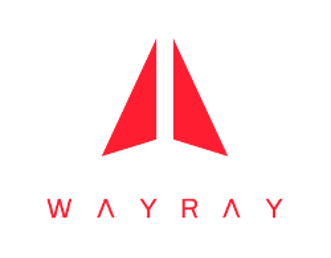
WayRay
Based in Zurich, WayRay developed of holographic augmented reality (AR) navigation systems designed to improve safety while driving a car. The company’s holographic AR navigation systems provide full-color heads-up displays in a car windshield and offers wide viewing angles while requiring less space for hardware and control systems, enabling car drivers to look through data in their windshields without looking down at gauges watching road conditions.
123Fab #45
1 topic, 2 key figures, 3 startups to draw inspiration from

According to Bloomberg NEF’s 2020 Climatescope findings, for the first time, renewables accounted for the majority of new capacity added (127 GW) in emerging markets (excluding mainland China and India). Indeed, many emerging countries are now embracing renewables for their environmental benefits but also their decentralized model, better suited to their situation.
Despite all the progress made, there are still 770 million people who do not have access to electricity, mostly in emerging countries. The rise of renewable energy in these countries has been made possible thanks to global financial support. Funding in these regions reached $21.3 billion in 2017, nearly double the 2010 level, according to the UN. It also coincides with a decline in the price of renewables. Some would even argue that it is now cheaper to invest in solar than coal in many jurisdictions (no climate risk, stable price, growing demand). In addition, emerging countries have a high natural potential for renewables. Ethiopia, for instance, is starting to tap into its strong hydropower capacity and has added 254 MW in 2019. With a total of 4,000 MW, it is the leading African country in terms of installed hydropower capacity today. In Kenya, the solar potential is rather high given its insolation rates, with an average of 5-7 peak sunshine hours and average daily insolation of 4-6 kWh/m2.
Therefore, in emerging countries where the infrastructure network is not yet mature and has a low coverage rate, distributed renewable energy systems are often a good alternative to connecting to a centralized grid or to relying on fossil fuels for electricity. These systems are either connected to community-level or micro-grid systems or are isolated household-level devices and systems for heating, cooking, and productive uses. The advantages of more distributed models include applicability to small and remote areas, reduced transmission and distribution losses, the allowance for direct and local private investment, local employment, and in some cases, improvements in reliability, speed of deployment, and local spill-over costs. Of the 26 million households relying on such renewable decentralized systems, there are primarily 20 million relying on Solar Home Systems (small-scale solar PV), 5 million households through renewable mini-grids; often powered by hydro energy, and the remainder through small-scale wind turbines and biomass digesters.
Thus, in emerging countries, decentralized renewable energy infrastructure is installed in place of the centralized electricity network in developed countries, as they do not have the same requirements in terms of maintenance and expected return on investment. The business models have also been adapted to the countries’ economic situation. Payment methods, for instance, are adapted to the low bank penetration rate and small payment amounts. In many countries, it is possible to pay with mobile credits or to pay-as-you-go (PAYG). Under PAYG schemes, customers typically pay a small initial fee for a solar charger kit, a portable system, and a control unit, and then pay for the energy they need, either in advance or on a regular basis according to their consumption. This payment method has spread at an average annual growth rate of 140% since 2013 – East Africa has accounted for most of this growth, thanks to a strong mobile money ecosystem. Startup BBOOX, for example,installs solar panels in households that can power up to five lights, a television, radio, torch, or a 12V battery, paid with PAYG mobile money. This is also what the subsidiary of ENGIE Fenix International offers. It provides access to energy via PAYG solar home systems to more than 500,000 customers in Africa. Additionally, with ENGIE PowerCorner, ENGIE supplies electricity to rural populations in villages across Tanzania and Zambia through smart mini-grids powered by solar energy and battery storage, used by households, local businesses, and public services. All these services are enabled by digital financial solutions such as mobile money and PAYG technologies. Finally, startup Offgridbox has developed and installed modular, compact units that provide renewable energy from solar panels on the roof and purified water in off-grid areas. 400 households can come and pay-as-they-go for drinking water and electricity.
The deployment of renewable energy in emerging countries has also benefitted from government and international organization support. It is clear that these countries do not have a sufficient national electricity network, thus governments, through regulation and financial support, participate. For instance, Kenya, Rwanda, and Tanzania all removed the VAT on solar products in 2014–2015. Another great example is the UN-supported international program Daunekhola micro-hydro system in Nepal. This micro-hydro system provides electricity and generates additional revenues for 116 households, and increases agricultural productivity thanks to the water flowing out from the system.
However, these new distributed renewable electricity models still face major challenges, which include high financing costs, lack of access to finance and long-term capital, and insufficient technical know-how for the operation and maintenance of renewable energy technologies. The Covid crisis also put a stop to this deployment, as fossil fuels and traditional industries received the majority of sovereign pandemic support. Moreover, to be sustainable in the long-term, there is still a lack of end-of-life management of these energy devices. A secondary market for small-scale renewable systems – such as PV panels – could benefit both producers and households.
To conclude, the diffusion of renewable energy in emerging countries is highly localized. Although its adoption is still scattered and dependent on regional incomes, it is best suited to local needs and does not rely on a costly and sclerotic infrastructure network. This market is surging and all actors, from local startups to Western corporations, are addressing it.
2 Key Figures
618 renewable energy in emerging countries startups
– excluding China – registered by Tracxn
Renewable energy market expected to reach $1,512 Bn by 2025
The renewable energy market was estimated at $928 Bn in 2017 and is expected to reach $1,512 Bn by 2025, at a CAGR of 6.1%
3 startups to draw inspiration from
This week, we identified three startups that we can draw inspiration from: Kingo, SunCulture, and Sistema.

Kingo
Kingo is a Guatemalan start-up. It provides pre-paid solar power based solutions to rural communities without access to an electricity grid. The users of their prepaid product can connect 3 light bulbs and 1 cell phone to the system at any one time. Additionally their technology is designed and manufactured to withstand rural living conditions where dust, heat, insects, rodents and moisture are all factors in need of consideration.

SunCulture
SunCulture is a Kenyan start-up that develops and offers solar-powered irrigation systems. It combines solar-powered water pumping with low-pressure drip irrigation systems. The system delivers water directly to crop roots. They also offer a Pay-As-You-Grow option that allows you to pay in small monthly installments.
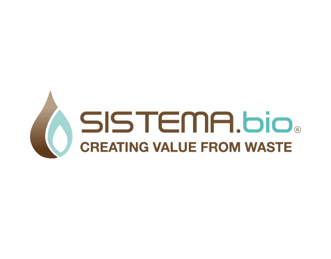
Sistema Bio
Sistema is a Kenyan start-up that provides biodigester to produce biogas from organic waste. The biogas can be used for residential and farming activities. They are operating in India, Kenya, Colombia, Mexico, and Nicaragua. They also offer pay-as-you-go payments.
123Fab #44
1 topic, 2 key figures, 3 startups to draw inspiration from
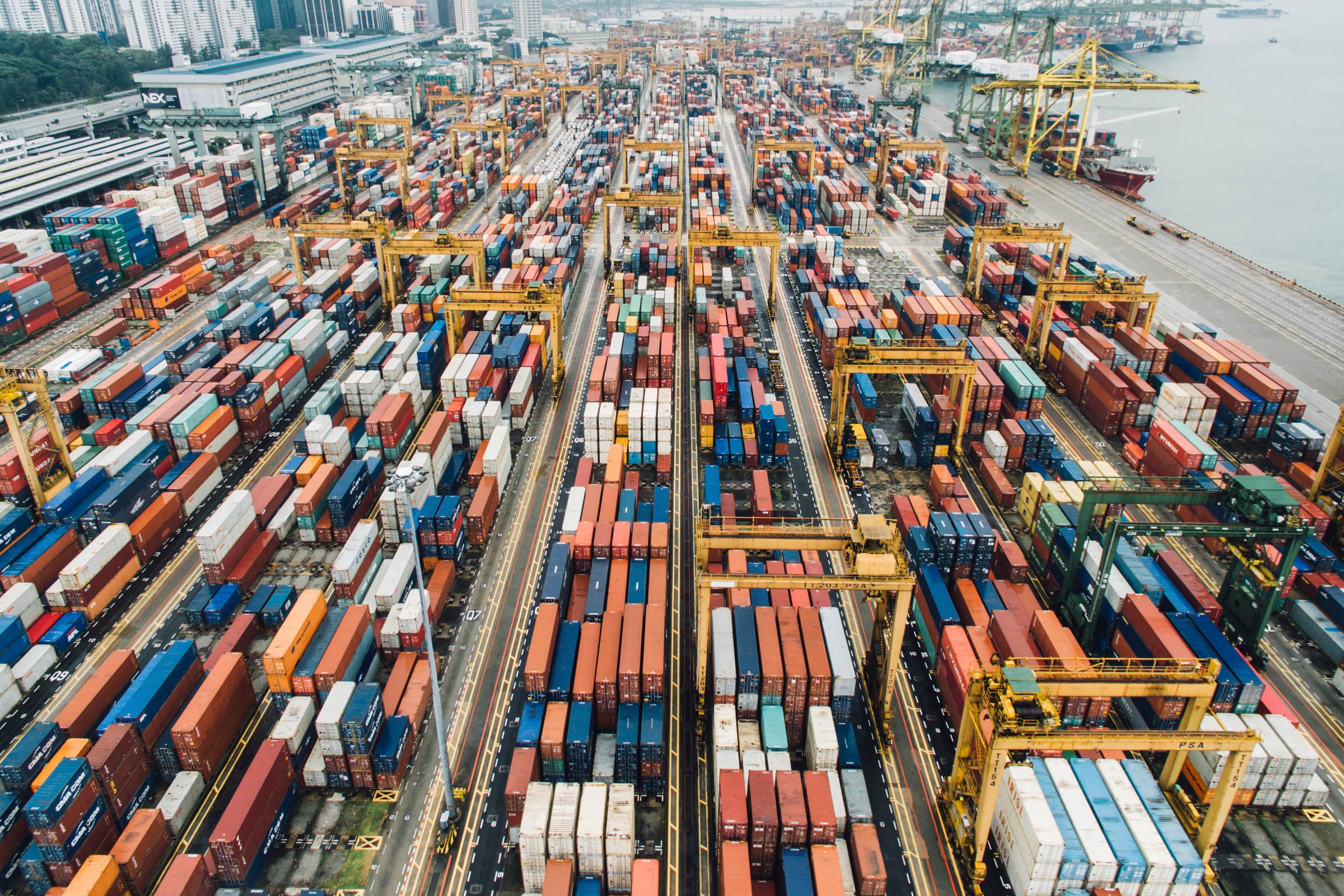
The growth of Software-as-a-Service (SaaS) and big data has changed customer-supplier relationships, with clients now able to browse for a product and compare suppliers (reliability, delivery schedule, product quality, etc.) at the click of a button. Yet, as much as sourcing and procurement for individuals have changed in recent years, this is not the case for the B2B sector, where changing or adding a supplier often implies a huge amount of paperwork and certifications.
As innovation becomes a central subject for most corporations and partnerships with startups become commonplace, there is a growing need for flexible and agile procurement processes to ease and foster these partnerships. Indeed, traditional corporate procurement methods are often a barrier to such partnerships, as evidenced by the endless and complex compliance documents required from startups, where the administrative department is often non-existent. In addition, corporate payment terms are often prohibitive for startups with a high cash turnover. Thus, some startups are seeking to address the need for flexible, agile, and easy-to-use sourcing platforms by offering a new vision of these processes.
Archlet, for instance, has developed a platform to improve the quality of strategic sourcing, rather than having information scattered upon emails and excels sheet. The platform provides an overview of the suppliers with a ranking, a price heatmap, and a negotiation recommendation. This tool helps corporations access a wider range of suppliers as the process is shorter and easier, but also increases savings as suppliers compete. Vizibl has also developed a platform to centralize information and supplier operations but focuses on collaborating with them to help improve the sustainability of their value chain, develop joint IP and improve productivity, leading to a 5-10% reduction in the cost of goods sold.
As digital transformation is a turning point for every company and the complexity of solutions is growing, some startups offer sourcing and procurement software. Olive offers a software selection platform to help businesses accelerate their digital transformation. The platform features surveys to assess the needs and key characteristics needed by the company and organizes the project requirements before sending them to relevant vendors. Their responses are then rated based on their fit with the requirements. Sastrify centralizes the procurement of SaaS for companies, their solution allows corporations to centralize an overview of their SaaS tools and helps them benchmark solutions, as well as negotiate their offers with providers.
In addition to general procurement solutions, which are dedicated to streamlining the process and measuring performance indicators, we are also seeing the emergence of solutions dedicated to certain procurement segments such as shipping. Shipsta focuses on logistics procurement solutions and shortlists transporters for all transportation modes based on your needs and the carriers’ ratings. Buyco, on the other hand, targets ocean carriers and provides a platform to compare carriers and book vessels, as well as track individual cargoes and manage the estimated time of arrival of each vessel.
Some corporations are already clients of these startups: Eramet, Saint-Gobain, and Andros are using Buyco and mining giant Rio Tinto called on Vizibl to optimize their road management processes. Nevertheless, procurement remains a difficult sector to change, as the processes and habits result of decades of use, and the degree of risk, legal compliance, cost of a contract are defined at this stage. However, there are signals that point towards the automatization of the most time-consuming procurement tasks in the coming years.
2 Key Figures
132 Procurement software startups
registered by Crunchbase
Procurement software market expected to reach $11.7 Bn by 2027
The procurement software market was estimated at $6.6 Bn in 2020 and is expected to reach $11.7 Bn by 2027, at a CAGR of 8.6%
3 startups to draw inspiration from
This week, we identified three startups that we can draw inspiration from: Archlet, Olive, and Shipsta

Archlet
Founded in 2018 in Switzerland, Archlet developed an intelligent sourcing platform designed to make data sourcing processes efficient and effective. The company’s platform leverages its existing data and uses guiding and intelligent software products, enabling customers to harvest the needed data to support their decision-making and negotiation process.
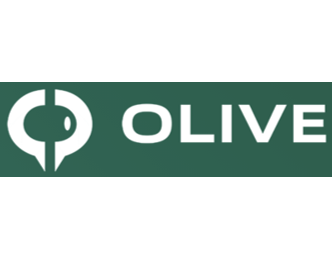
Olive
Olive is a Canadian startup that developed a vendor selection software designed for teams to collaborate on and streamline digital transformation. The company’s platform replaces traditional manual evaluation processes with spreadsheets, meetings, word docs and puts it all in one platform while letting vendors promote their products and buyers evaluate their options, helping companies shorten the enterprise software buying process.

Shipsta
Based in Luxembourg, Shipsta provides logistics procurement services intended to create integrated rate management and procurement application. The company’s services optimize procurement and tendering processes, and digitally link shipping agents with freight, enabling companies to efficiently automates logistics procurement processes for spot buying and contract buying.
123Fab #43
1 topic, 2 key figures, 3 startups to draw inspiration from
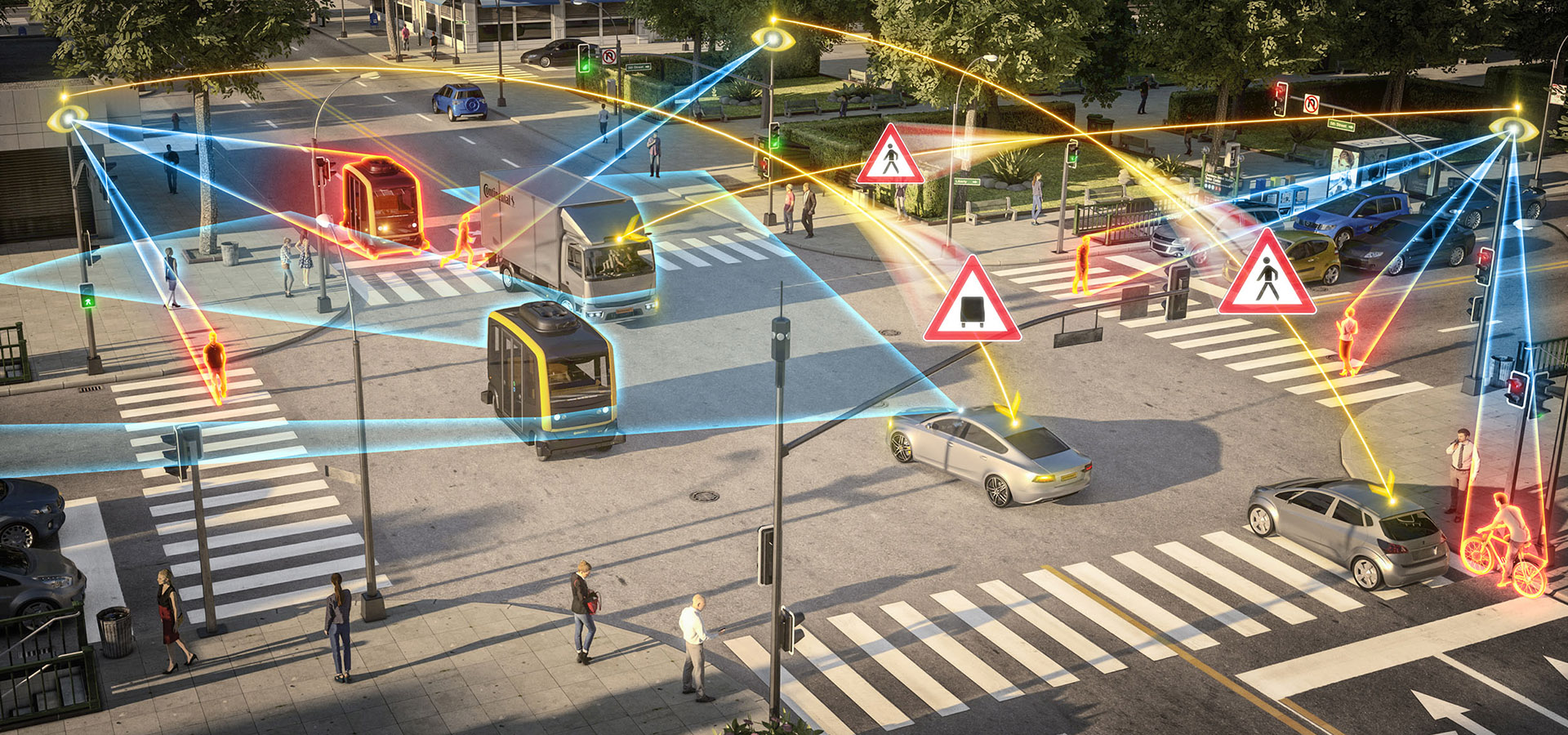
The city of Las Vegas has recently been granted permission to install and test 25 cellular-vehicle-to-everything (C-V2X) roadside units, to transition from Dedicated Short-Range Communications (DSRC) for connected vehicles, to cellular. The objective is to demonstrate the benefits of C-V2X technology, which is said to be as reliable and performant but with twice the range of DSRC. This highlights the growing presence and adoption of Vehicle-to-Everything (V2X) installations within cities. V2X refers to the transmission of information from a vehicle to any entity that may affect the vehicle and vice versa. It includes Vehicle-to-Infrastructure (V2I: data exchange between a car and equipment installed alongside roads, generally a roadside unit), Vehicle-to-Vehicle (V2V: data transfer between vehicles), Vehicle-to-Network (V2N: when a vehicle accesses the network for cloud-based services), Vehicle-to-Pedestrian (V2P), Vehicle-to-Device (V2D) and Vehicle-to-Grid (V2G: information exchange with the power grid). In this newsletter, we will focus on two key components of V2X which are V2V and V2I. The main motivations for V2X are road safety, traffic efficiency, and energy savings. Indeed, according to GSMA forecasts, by 2025, V2X could prevent 260,000 accidents (by detecting road hazards or vulnerable pedestrians and cyclists for example), save 11,000 lives, save 280 million hours of driving each year, and avoid 400,000 tonnes of CO2 emissions (for instance, with platooning, cars or trucks follow each other with short inter-vehicle distance, resulting in reduced fuel consumption and CO2 emissions).
With the advancement of V2X technologies, such as its non-line-of-sight sensing capability that allows vehicles to detect potential hazards, traffic, and road conditions, vehicles are becoming increasingly connected and are being progressively equipped to become fully autonomous. Some legacy V2I technologies are currently in operational use worldwide for relatively simple applications (e.g. for Electronic Toll Collection), while advanced V2X systems are beginning to gain widespread commercial acceptance. They rely on two underlying technologies:
- IEEE 802.11p or DSRC (Dedicated Short Range Communications): this original V2X standard is now mature and mainly used for safety use cases (such as starting to brake before a pedestrian or a hazard is visible to the driver), due to its reliability and low latency (2 ms). However, its range is rather short (less than 1 km). This technology is prevalent in North America, Japan, and Europe.
- Cellular V2X (C-V2X): this relatively new technology offers several operating modes that users can choose from, such as direct communication between vehicles or with the infrastructure and further road users (pedestrians, cyclists). For now, it is mostly used in non-safety-related use cases (vehicle operation management, traffic efficiency, etc.). While this technology has a range of 10km, it requires network support (4G/LTE/5G) and has a higher latency (1s). This technology is very present in China.
Hybrid solutions could be developed by 2030 to achieve interoperability. Startups like AutoTalks are working on such hybrid modules (capable of supporting both DSRC and C-V2X). Indeed, AutoTalks is an Israeli leader that develops fabless semiconductors for the V2X market. They address a variety of issues related to V2X communication, including communication reliability, security, positioning accuracy, and vehicle installation. AutoTalks has developed a chipset capable of supporting dedicated short-range communications (DSRC) and cellular’s C-V2X.
Many OEMs and automotive players are including V2X services into their car models. For instance, Volkswagen has premiered its all-new Golf with V2X capabilities. Car2X-signals from traffic infrastructure and information from other vehicles up to 800 meters away are notified to the driver via a display. The Golf also shares these warnings with other Car2X models. Initially focused on road safety and traffic efficiency applications, Toyota and General Motors were early adopters of IEEE 802.11p-based V2X technologies in Japan and North America. However, the momentum has lately swung in favor of C-V2X and they have expressed their willingness to invest in C-V2X technologies. This is also the path taken by Audi and Qualcomm Technologies, which are deploying a C-V2X technology pilot in Virginia. Workers wear special vests with built-in V2P technology that can alert drivers to their presence.
Besides the challenge of choosing the optimum communication bearer (DSRC, C-V2X, or hybrid), which keeps the industry and the mobile community very active, the security of V2X communication is also a key issue. The regulatory environment is the most important factor influencing the adoption of V2X technology. In China, the government has taken a stand and showcased C-V2X regulations, which should encourage automakers to position themselves quickly. In contrast, in North America and Europe, the governments and transportation ministries are struggling to bring clarity to the industry in terms of V2X, its scope and limitations.
To conclude, there is strong potential for V2X applications, the technologies exist, and it seems that the automotive industry will not wait for regulation to adopt V2X services. However, large-scale adoption will take time, due to the need to equip all infrastructures with adapted devices and the time needed for the automotive players to align on a single (or hybrid) communication technology.
2 Key Figures
433 V2X startups
registered byTracxn
Automotive V2X market expected to reach $12.9 Bn by 2028
The automotive V2X market was estimated at $689 M in 2020 and is expected to reach $12.9 Bn by 2028, at a CAGR of 44.2%.
3 startups to draw inspiration from
This week, we identified three startups that we can draw inspiration from: Valerann, Commsignia, and Connected Signals
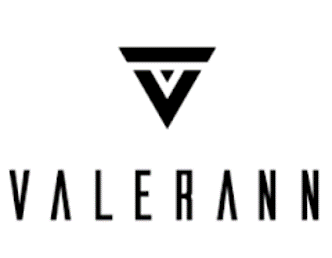
Valerann
Valerann is an Israeli start-up that develops sensor systems for installation on roads, and an associated data platform. Their smart studs, installed along the roads, can sense traffic movement, specific weather conditions, road issues and send this data to the central data centre. Combined with intended integrations with Waze, Google Maps, etc., Valerann intends to create a connected real-time traffic notifications and analytics platform.

Commsignia
Commsignia is a Hungarian start-up that develops cooperative intelligent transportation systems designed to increase traffic safety and efficiency on the road. It includes V2V and V2I communication systems that provide actionable insights pertaining to the logistics pipeline through their in-app information services, thus enabling businesses, corporate clients and logistics industry players to connect with other drivers for various road-safety programs.

Connected signals
Connected Signals (originally, Green Driver) is an American high-tech startup, focused on providing traffic signal state and predictions to drivers, automakers, and others. Knowing the current state of traffic lights and how they will change creates opportunities to increase driving safety, increase fuel efficiency, and improve the driving experience. Applications range from EnLighten, which tells drivers when the light they are stopped at will turn green, to vehicle powertrain optimisation based on the state of upcoming lights.

We are delighted to be part of LeadershIP4SMEs, an EU research project under H2020, which aims to help IP-centric startups & SMEs better leverage their IP assets to access adequate funding.
Intellectual property rights (IPR) can be an ignored value due to intangibility and missing ways / methods to consider it for the funding and investment of SMEs and start-ups. The EU-funded LEADERSHIP4SMEs project will support innovative SMEs and start-ups to improve and strengthen, and thus valorize their IPR, facilitating their access to adequate funding that is vital to their growth. The project will set a platform of specific tools to:
- Strategically manage and place IPR in the business model and plan to attract
funding; - To define the most value-creating business strategy;
- To better value and protect their intangible assets;
- To generate business and encourage collaborations;
- As well as to help identifying financial guarantees, at regional, national and
European level.
The platform relies on a compilation of the best practices in the domains of IPR management, business acceleration and funding that allows a better valuation of IPR and acts as an online hub of support from IPR, innovation and business support, and private and public funding and cooperation.
In addition to the implementation of this platform, a support program for startups and SMEs is being deployed, with the aim of operationally helping beneficiaries to effectively leverage their IP assets to stimulate their growth.
The LEADERSHIP4SMEs consortium is made up of 8 European partners with complementary expertise about intellectual property protection and the financing of companies with high growth potential: Aster, BCR, bwcon, Bugnion, CNRS Innovation, Iceberg, INNOVA, KMU Forschung Austria.
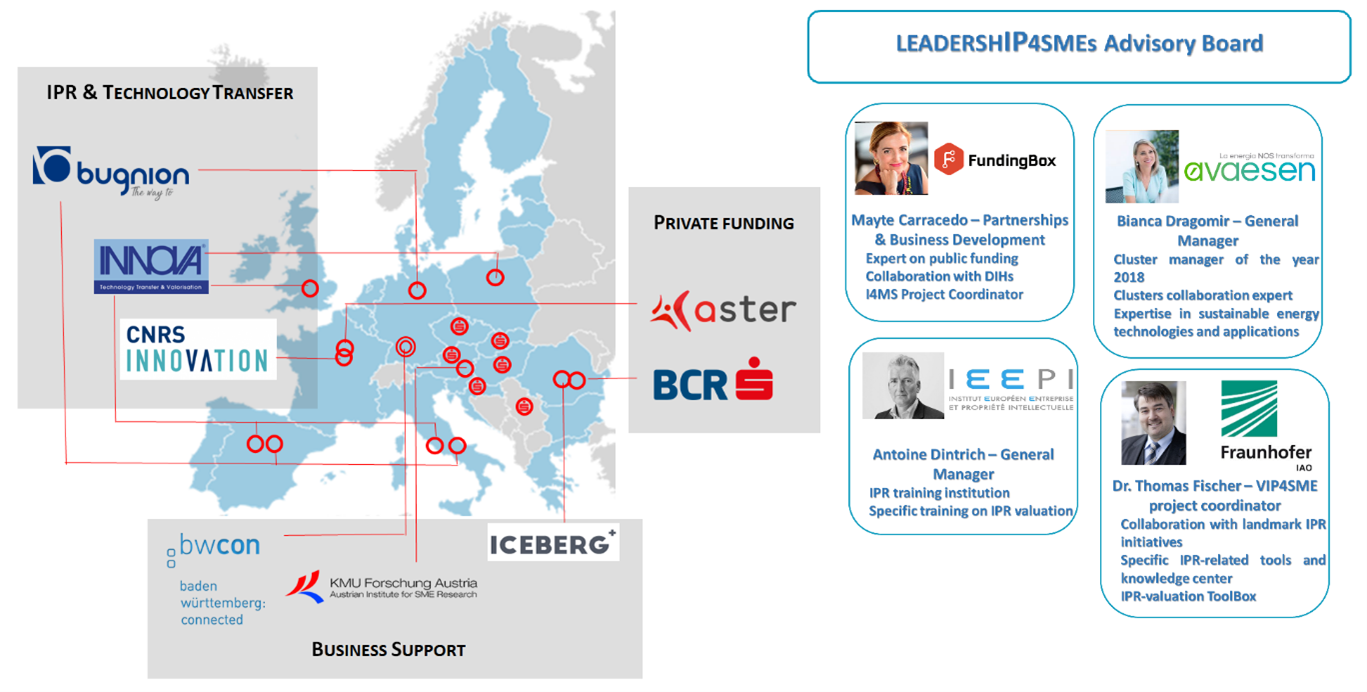
123Fab #42
1 topic, 2 key figures, 3 startups to draw inspiration from

Since the Paris agreement five years ago, most of the 196 signatories have taken steps to limit global warming below 2°C above pre-industrial levels. The EU has set a carbon neutrality goal by 2050 and a 55% decrease in greenhouse gas emissions by 2030 compared to 1990. Corporations across all industries are also taking action to reduce their carbon impact: from Danone’s commitment to be carbon neutral by 2050, to Carrefour’s 40% decrease in CO2 emissions by 2025 and 70% reduction by 2050 compared to 2010, to Microsoft’s goal to be carbon negative by 2030. Climate consciousness and decarbonization have gained tremendous momentum over the past decade, and customers are increasingly engaged: for a $100 product, they are willing to pay an average of $19.50 more to offset carbon emissions. Demonstrating environmental commitment is now a sine qua non condition for a leading businesses and the most impactful indicator is the quantity of CO2 equivalent released.
To assess the carbon footprint of a company, a wide variety of data is required. Emissions are segmented into 3 scopes:
- Scope 1 represents direct GHG emissions such as emissions from combustion and processes.
- Scope 2 refers to indirect emissions associated with energy consumption, the amount of GHG released to produce the electricity, heat, cold, or vapour consumed.
- Scope 3 gathers all other indirect emissions including those from the upstream and downstream value chain, transportation of persons and goods, waste, purchases of products and services, use of the sold products etc.
For each category, the emission factor (kWh used, litres of fuel consumed, kilometres travelled…) must then be translated into equivalent tons of CO2 emitted. This adds to the complexity of the process as the available data is not always in a good format or directly usable (companies can have different energy contracts in different countries, relying on a complex energy mix and an uneven contribution to energy sources depending for instance on the country’s energy policy).
This study must be carried out for each type of product at each company site, so the difficulty of gathering and translating all the data into CO2 emissions grows exponentially with the size of the company, even if all the data is available. Sometimes the necessary data is not available. For instance, a company’s carbon footprint also includes emissions from employee commuting, which requires assumptions to estimate.
The complexity and cumbersomeness of this process have led to the emergence of new tools to automate the analysis and tracking required for carbon emission accounting.
- Emission tracking: Startups such as Emitwise, Worldfavor, and Position Green have designed software and platforms that gather information from all of a company’s locations to automate sustainability reporting and track emissions. These tools give corporates a better understanding of their carbon emissions and allow them to take the most impactful actions for the environment. Other startups target specific sectors. For instance, Sustainabill focuses on tracking the environmental impact of supply chains and allows businesses to compare the sustainability ratings of their suppliers. CarbonCloud develops automated carbon footprint scoring for the food and beverage industry.
- Emission tracking and reduction: Another way to help corporates reduce their carbon footprint is to provide them with insight. Cozero has developed a platform that automates emission accounting, as well as a digital marketplace that offers low-carbon alternatives to reduce carbon emissions. Klimametrix sends its users individual action plans based on their footprint calculations to help them reduce their CO2 emissions. Planetly has built software to analyze companies’ emissions and suggest actions to reduce them, whether it’s improving production processes, switching to renewable energy or adopting greener transportation for business trips.
- Emission tracking and offsetting: Some startups help reduce carbon emissions by offsetting them, guiding corporates in financing carbon reduction projects to compensate their own emissions. Startups like ClimateSeed and Cloverly help measure your carbon footprint and select relevant carbon reduction projects. You invest in one or more projects and receive carbon credits in line with your emissions. This system allows corporates to invest in reliable and verified projects, and to receive reports on the progress of these projects.
It is more difficult for large corporates to track their emissions accurately due to their large number of inputs, locations and suppliers. In fact, most call on consulting firms to get a tailor-made solution and assessment of their emissions. Last year, Amazon invested in Pachama, a startup that offers offsetting solutions through reforestation and quantifies the carbon absorbed by planted trees. This year, Samsung partnered with Carbon Footprint Ltd to offset the carbon footprint of their washing machines and dryers over their lifetime. ERP companies have a head start on this subject, as their software already handles much of the data needed for carbon accounting. In 2019, Salesforce launched its sustainability cloud and last year SAP launched its carbon footprint analytics to meet the demand for automated carbon accounting.
In conclusion, automated emissions tracking is still an emerging topic, which makes it difficult for companies to choose a tool given the lack of differentiation between them. However, in the coming years, we expect to see an increase in investment in this area, as well as a proliferation of startups. The ones that will stand out from the rest will be those that manage to position themselves in specific and highly regulated sectors; across the entire value chain; with smooth integration within the existing IT infrastructure.
2 Key Figures
95 carbon footprint software startups
registered by Crunchbase
Carbon footprint management market expected to reach $12.2 Bn by 2025
The global carbon footprint management market was estimated at $9 Bn in 2020 and is expected to reach $12.2 Bn by 2025, at a CAGR of 6.2%.
3 startups to draw inspiration from
This week, we identified three startups that we can draw inspiration from: Sustainabill, Cozero, and Cloverly.
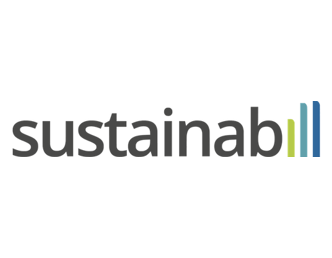
Sustainabill
Sustainabill is a Cologne based startup,developer of supply chain management platform designed to achieve multi-tier-visibility and trace supply chains to the source. The platform analyses the entire supply chain network and source of the raw material to collects data from suppliers and sub-suppliers as well as to identify sustainability-related risks.

Cozero
Cozero developped a digital carbon action platform focused on helping companies take control of their corporate emission data. The companies platform offers tools for end-to-end carbon management, planning, emission accounting and carbon portfolio management to maintain carbon log and forecast carbon output using data analytics, thereby enabling companies to achieve carbon neutralization.

Cloverly
Cloverly’s sustainability as a service platform calculates the carbon impact of common internet activities like e-commerce shipments, rideshare and on-demand deliveries and then purchases carbon offsets to make those activities carbon-neutral, enabling buyers to view in real-time the source of the offset and through its algorithm matches customers with the closest source of renewable energy for localized impact.
